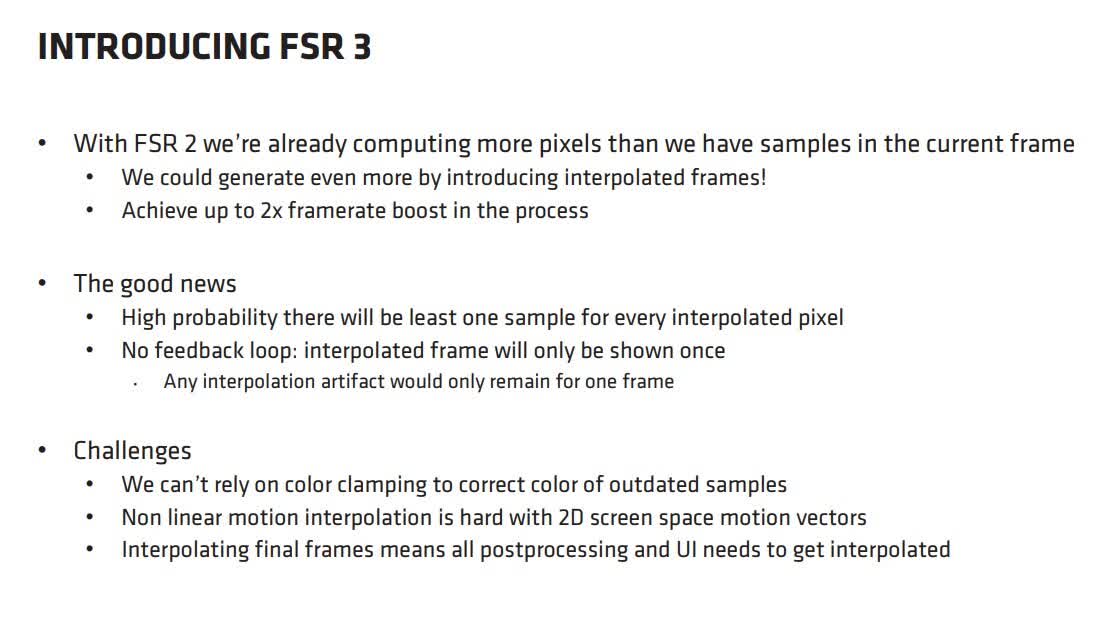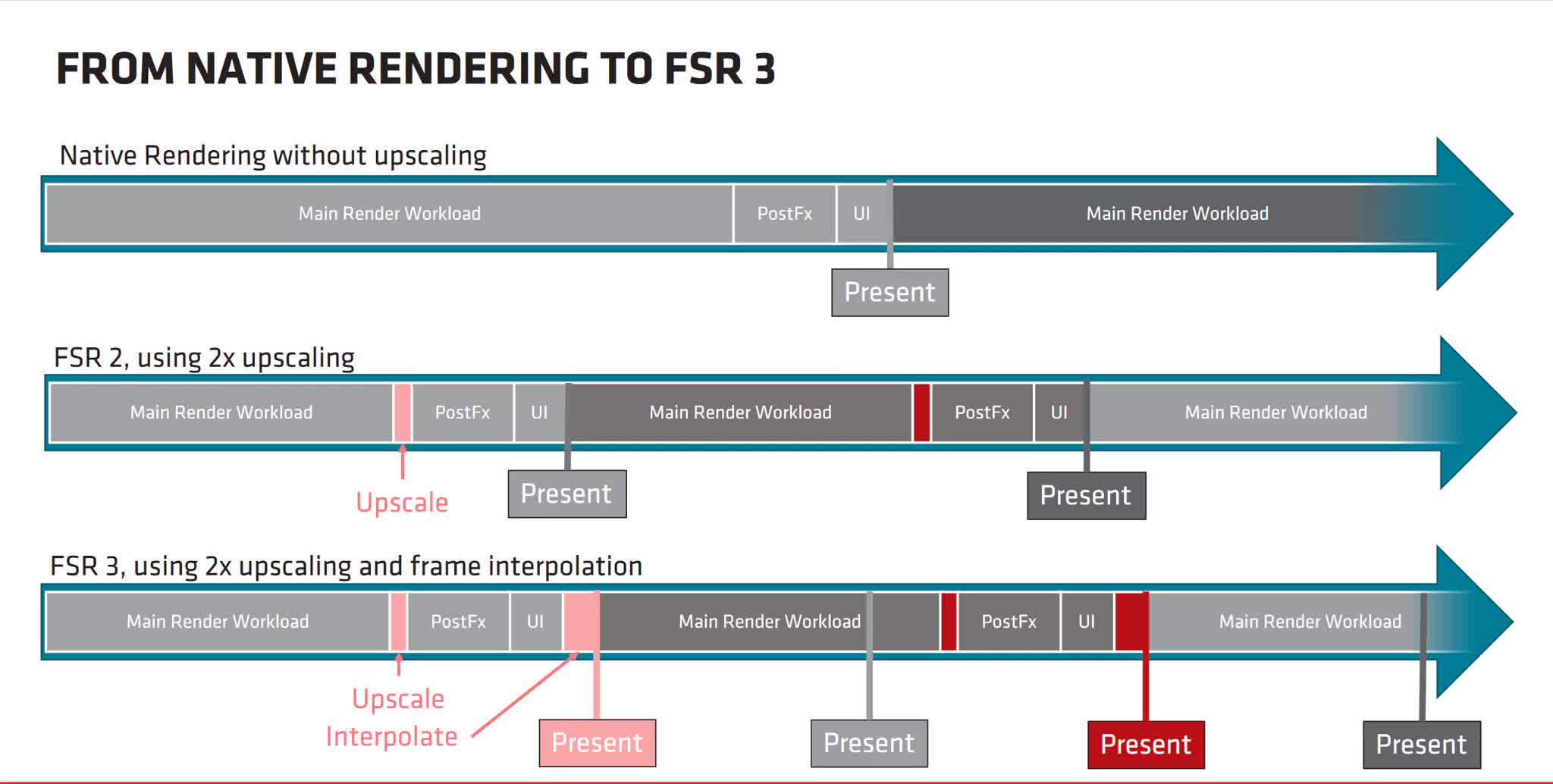Forward-looking: During last year's Ryzen 7000 series launch, AMD announced updates to its FidelityFX Super Resolution upscaling solution. Team Red doubled down on its promise at this year's Game Developer Conference, presenting more details surrounding the benefits, challenges, and technologies related to FSR 3.0's development.

During its FidelityFX™ SDK presentation, AMD's Jason Lacroix treated attendees to a more detailed preview of the tool's upscaling features and capabilities. The next iteration of FidelityFX Super Resolution (FSR 3.0) will give users a two-fold increase in frame performance compared to the existing FSR 2.0 solution. Unfortunately, AMD didn't have any dates concerning the technology's release.
Team Red says it can already deliver on the claims using currently available solutions and a concept known as frame interpolation. Frame interpolation is used in up-sampling technologies to synthesize pixels and frames between generated frames or images. The technique is crucial in increasing upscaled frame-per-second performance without sacrificing overall image quality.

If successfully implemented, AMD engineers are confident they can achieve more than twice the framerate boost while achieving a one-to-one ratio of sample and interpolated pixels. The solution's successful implementation would also ensure no feedback loops in the generation process, so any artifacts or other inaccuracies would appear only once and not be factored into future frames.
The road to reaching the desired goal of doubling frame performance is no simple task. According to the presentation, several challenges remain before AMD can successfully implement FSR 3.0. Team Red did not shy away from discussing these challenges, highlighting potential issues related to color clamping techniques, non-linear motion interpolation, and increased interpolation requirements for postprocessing and user interface elements.
AMD's upscaling solution is a software-based, open-source technology that can be leveraged across multiple generations and brands of graphics hardware. The solution is fighting an uphill battle against Nvidia's hardware-based Deep Learning Super Sampling (DLSS) technology. DLSS 3.0, which has been available for adoption and use since the RTX 4000 series graphics cards launched in October of last year, relies on proprietary, hardware-based Tensor cores to support its upscaling solutions.

FidelityFX Super Resolution is a software-based, open-source technology that developers can leverage across multiple generations and brands of graphics hardware. The solution is fighting an uphill battle against Nvidia's hardware-based DLSS. Deep Learning Super Sampling 3.0, available since the RTX 4000 series graphics cards launched in October, relies on proprietary hardware-based Tensor cores to support upscaling.
While AMD's solution is more than a generation behind Nvidia's latest iteration, adherence to an open, software-based solution could be the differentiator for developers looking to adopt an upscaling methodology. The upcoming FSR 3.0 technology aims to provide developers and users with excellent overall performance, reduced latency, and a more streamlined integration path for new games and those already utilizing FSR 2.0. In contrast, Nvidia's DLSS 3.0 is exclusive to the latest lineup of 4000-series GPUs.
If AMD's FSR 3.0 continues the company's trend of supporting older, and even competing, hardware while delivering on promises of enhanced visual quality and frame delivery, then Team Red may be able to close the growing gap in the battle for upscaling technology adoption.
https://www.techspot.com/news/98075-amd-unveils-new-fidelityfx-super-resolution-30-details.html